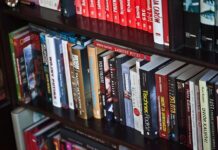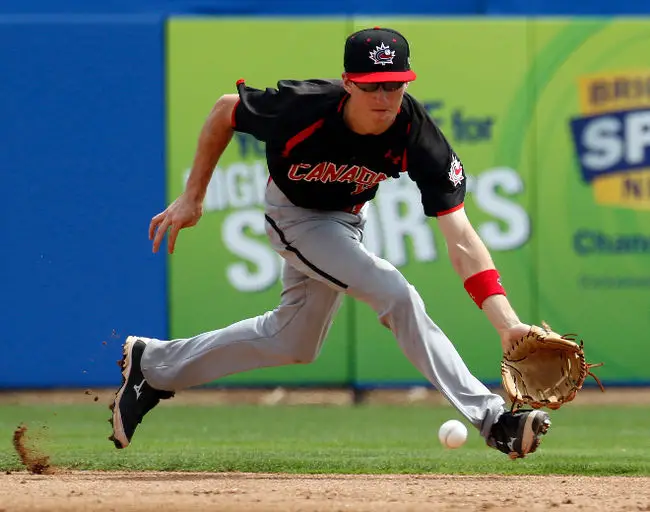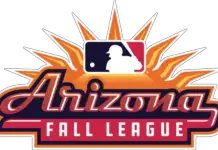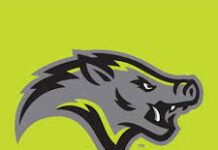Welcome to the penultimate installment of my countdown of the Orioles Top 50 Prospects for 2018. If you want to check out the stats for these players, click their name and it’ll take you to their Baseball Reference page.
Catch up with links to the previous installments below.
#11-20
Rank – Name – Position – Highest Level – Age on opening day 2018
Tier 5 – Future Value 40
#20 – Cameron Bishop – LHP – Short Season – 22
The Orioles drafted Bishop in the 26th round in this year’s draft. He signed for a 605K bonus (505K overslot). Bishop has missed his entire Junior year at UC-Irvine with an oblique injury. He dominated the NY/Penn league, pitching to a 0.78 ERA over 30+ innings.
Bishop has an inning eater frame and delivery. He has average control and some ability to move the ball around within the zone. I think this improves as he is further removed from his injury. The delivery is simple and repeatable without much effort. Bishop’s low 90s fastball that can be a bit flat and gets barreled in the zone. This is my primary concern with him, whether the fastball plays against advanced bats. He has an average change-up that tunnels well with his fastball and a fringy, slurvy slider, that I’d project to average. Bishop has a good feel for pitching as well. Three average or better pitches from a lefty with a good starter’s delivery is nothing to sneeze at. He profiles as a 4th/5th SP and could be much higher at next report if the stuff ticks up after a healthy off-season.
#19 – Lucas Long – RHP – AA – 25
The Orioles selected Lucas Long in the 24th round of the 2014 draft out of the Univ. of San Diego. He’s moved steadily through the Orioles system, producing varying ERAs but consistently solid peripherals at every level (>50% GBs, >7 K/9, and <3 BB/9). He had has best season in 2017, pitching to a sub-3 ERA over 128 AA innings.
For a guy with little to no prospect pedigree, Long has fairly robust stuff. He features a plus fastball that sits 92-94 and can touch 96 with heavy sink and tail. Long generally has good command of the pitch as well and likes to work it in on RHB and away from LHB. He also throws a firm low 80s curveball that looks more like a slider at times, it’s average on good days, fringe average most of the time. It generates whiffs when spotted well. There is a fringe average change, that can be a bit firm. Rounding out his arsenal is a below average cutter that is his most hittable pitch. When he commands his fastball well it doesn’t matter that his secondaries are lackluster, the fastball generates whiffs and worm-burners at an impressive rate.
Long was used in both a long relief and starting roles in 2017, he has some effort to his delivery and the lack of a true out pitch probably make him a better fit for the bullpen. He has a high floor, as I’m confident he’s ready to get MLB hitters out in a middle relief role right now. He has some starter’s upside if his secondaries take a step forward, but at his age, it’s probably not a good bet. Otherwise he profiles as a useful multi-inning relief piece.
#18 – Jose Mesa Jr – RHP – AA – 24
Mesa was the Orioles 3rd Rule 5 pick in December and in my opinion the best of the bunch. You’ll see plenty of reports on Mesa’s stuff saying it’s nothing special, but it improved significantly in 2017, especially later in the season. Here is my detailed write-up on him.
Tier 4 – Future Value 45
#17 – Michael Baumann – RHP – Short Season – 22
The Orioles drafted Baumann in the 3rd round of the 2017 draft. He excelled over 41 innings of short season baseball, pitching to a 1.31 ERA. Here is what I wrote about him for Notes From The Sally (follow the link for the full Delmarva Shorebirds preview).
“Baumann is an athletically built 6’ 4” RHP. He has a long, but smooth arm action and stays closed late which adds deception. He has a high ¾ arm slot and generates downward plane with boring action. The fastball sits 93-94 and touches 96. It plays well, even in the middle of the plate against LHB, it doesn’t get squared up at the short season level. He also shows a plus slider with sharp two-plane movement. The curveball and change-up are less refined but the change-up especially has a chance to be an average pitch.”
“Currently, his control/command are below average but due to his deceptive delivery and good stuff, young hitters are swinging at bad pitches. His arm action will probably limit his command and I don’t ever see him as a guy who’ll be able to spot his pitches well, but he’s athletic and I could see decent control down the line.”
“Baumann has the upside of a #3 starter, but there is plenty of reliever risk here. If the command/control don’t improve he could still be a late inning relief option.”
#16 – Cody Sedlock – RHP – A+ – 22
The Orioles 2016 first round draft pick, Sedlock had a 2017 to forget. He battled arm injuries, reduced velocity, and lackluster results. Sedlock had lights out stuff in college and in short season ball after being drafted. He was sitting 93-95 with movement. His slider flashed plus, and there were the makings of a solid change-up and curveball. The big concern was command. Flash forward to 2017 and his fastball velocity is down to 90-92 and it dropped even further after the first couple innings.
Sedlock made a very noticeable change in his delivery that I think is to blame for the injuries and loss of stuff. In college, he had a long but smooth arm action with good timing. The new delivery has a choppy, exaggerated arm action with an awkward full elbow extension before coming to the plate. This affects his timing and makes it hard for him to stay on top of the ball. Reports out of instructs are that he’s working to get his college delivery back. If there are no lasting injury issues, I could see Sedlock jumping right back into the Orioles top 10. He’s got a chance for a plus fastball and 3 other average or better pitches. That will play either as a starter or in a high leverage relief role.
#15 – Brenan Hanifee – RHP – Short Season – 19
The Orioles snagged Hanifee in the 4th round of the 2016 draft. He didn’t pitch for the Orioles in 2016 due to a back injury. He made his debut in 2017 for the Aberdeen Ironbirds as a starter and logged almost 70 IP.
Hanifee is likely the most athletic pitcher in the Orioles minor league system. He fields his position well, repeats his delivery, and just makes it look easy. He was a star wide receiver in high school, so it makes sense. Hanifee is 6’5″ and well proportioned but he doesn’t have his adult body yet. He has room to add size and strength to his projectable frame. He was a multi-sport athlete in HS and doesn’t have a long history of pitching against top competition, so his debut performance is all the more impressive.
Hanifee’s repertoire is fairly raw at this time. His best pitch is his fastball that sits 90-92, but plays up due to extension and plus arm-side run. He has a high glove set and a short, quick arm action that allows for an advanced ability to throw strikes. Command is a bit behind at this point, but it should catch up with maturity. He has the makings of a solid slider, he can throw it for strikes, but hasn’t mastered dropping it out of the zone for chases yet. He didn’t use his change-up much and it’ll be something to watch for in 2018. This ranking is mostly projection, but honestly, the amount of development needed is the only reason he’s this low. I’m a believer. I expect to see a couple ticks more velocity in the future and if he can find an out pitch watch out.
#14 – Jomar Reyes – 3B – A+ – 21
Reyes seems like he’s been a prospect in the O’s system for the longest time. It’s easy to forget that he’ll just be 21 to start the 2018 season. Various hand injuries have slowed him down. The latest being a frustrating, self-inflicted broken hand which he sustained after punching a locker this season. Despite that, Reyes had a good 2017 campaign. He reduced strikeouts and appeared to be leaner and more agile in the field and on the bases.
Reyes carries some of the best tools in the system, including plus to double plus raw power and a double plus arm. He has plus bat speed, that plays down a little due to stiff mechanics. It seems like he is just trying to swing too hard, and it limits his ability to manipulate his swing. Right now, he hits the ball hard frequently, but beats it into the ground. His raw power isn’t going to play more than average in game until he can start getting the ball in the air.
Defensively, I’ve seen reports saying he’s destined for 1B. I used to agree, but he’s really improved. He is showing a better first step and more consistency with his hands. His range isn’t great, but the arm is a cannon. In my opinion, he’s given himself another year or two to try and stick there. Honestly, I’m might be more optimistic about him at 3B than Mountcastle at this point. Reyes’s bat will play even at 1B as long as the raw power starts showing up in games.
#13 – Anthony Santander – LF/RF – MLB – 23
The Orioles managed to carry the Rule 5 pick Santander through the 2017 season even though he hadn’t played above A+ ball going into the season. Although they did have to keep him on the DL for much of the year and thus will have to have him on the 25 man roster to start 2018. He must have been working out during his DL stint because it was clear from his first rehab game in Bowie that he had put on some good weight. He stood out in his AA rehab, he had a major league body, and at times looked like the best player on the field (on a team with Hays, Mullins, Mountcastle, and Stewart). However, he struggled and looked lost at the plate in his short MLB stint and in the AFL.
Santander is a switch hitter with a pretty swing especially from the LH side. There is loft/leverage and he puts a ton of balls in the air. There is some length, but it plays with his above average bat speed. During his struggles with the O’s and in the AFL, his swing looked very different. It looked like he was squeezing that handle too hard and trying to hit everything a mile. It caused his swing to be grooved and stiff, exposing holes that pitchers took advantage of. Hopefully he just got a bit over his head and will adjust after a healthy off-season. In the field, Santander has enough arm for RF, but lacks the speed to add any value in either of the OF corners. He will likely slow down more as he ages and will probably be a fringe average fielder.
Santander has real upside with the bat. That’s good because he’s really going to need to hit to make up for not having much to offer in the other phases of the game. He needs regular ABs so hopefully he’ll either snatch a starting role or get sent down for regular AAA work after he gets his 44 days service time necessary to lose the Rule 5 status.
#12 – Adam Hall – SS – Rookie – 18 (Pictured)
The Orioles selected Hall in the 2nd round of the 2017 draft out of a Canadian HS. He’s 6’0″ with a thin but wiry build. I don’t have a ton of info on him since he didn’t play much after being drafted due to a oblique injury. Looking at pre-draft video, Hall looks like a guy with the arm and range to have a decent shot to stick at SS. He has above average bat speed and a loose swing, although there is some bat wrap that could be smoothed out. It’s a line drive swing, but I think there is a chance for some pull power at maturity. He has plus-plus 60 yard dash times to his credit, so speed is a part of his game. It’ll be interesting to see how he responds to pro pitching in 2018.
#11 – Zac Lowther – LHP – Short Season – 21
The Orioles selected Lowther in the supplemental 2nd round of the 2017 draft. I suggested when he was drafted that he’d be too advanced for short season ball. I was right, but I underestimated how far ahead of hitters he was going to be. Lowther dominated the NY/Penn league by every stat you can think of, highlighted by striking out almost 7 times as many batters as he walked. Here is what I wrote about him for Notes From The Sally (follow the link for the full Delmarva Shorebirds preview).
“Lowther is a 6’ 2” thickly built LHP. He has an abbreviated wind-up and a quick, whippy arm action from a low ¾ arm slot. It looks a little violent at first glance but he puts himself in good position by the time his front foot plants. He isn’t traditionally projectable, but he does look like he may be able to benefit for some pro strength and conditioning.”
“His fastball sits 89-91 but I’ve heard that it touches 93-94 on occasion. It has plus late arm-side run but it lacks plane. The movement allowed it to miss bats at the short season level, but I’d expect that to diminish as he faces more advanced hitters. His curveball is the star of the show. It’s an upper 70s tight 11-5 late breaker, it’s only average to above average pitch but plays much better than that because he can spot it all over the plate better than some pitchers can command their fastball. NY/Penn league hitters were helpless against it. He also has the feel for a change-up that is deceptive but lacks tumble, it’s currently fringy but he didn’t throw it much in college and I’d project it to average.”
“Without a tick or two of velocity I can’t see much more than a 4th starter ceiling, but he should be a fast mover and has a relatively high floor (swingman) due to his plus command and at least two MLB average pitches from the left side. I’d expect him to start in High-A Frederick.”
Discuss here

























